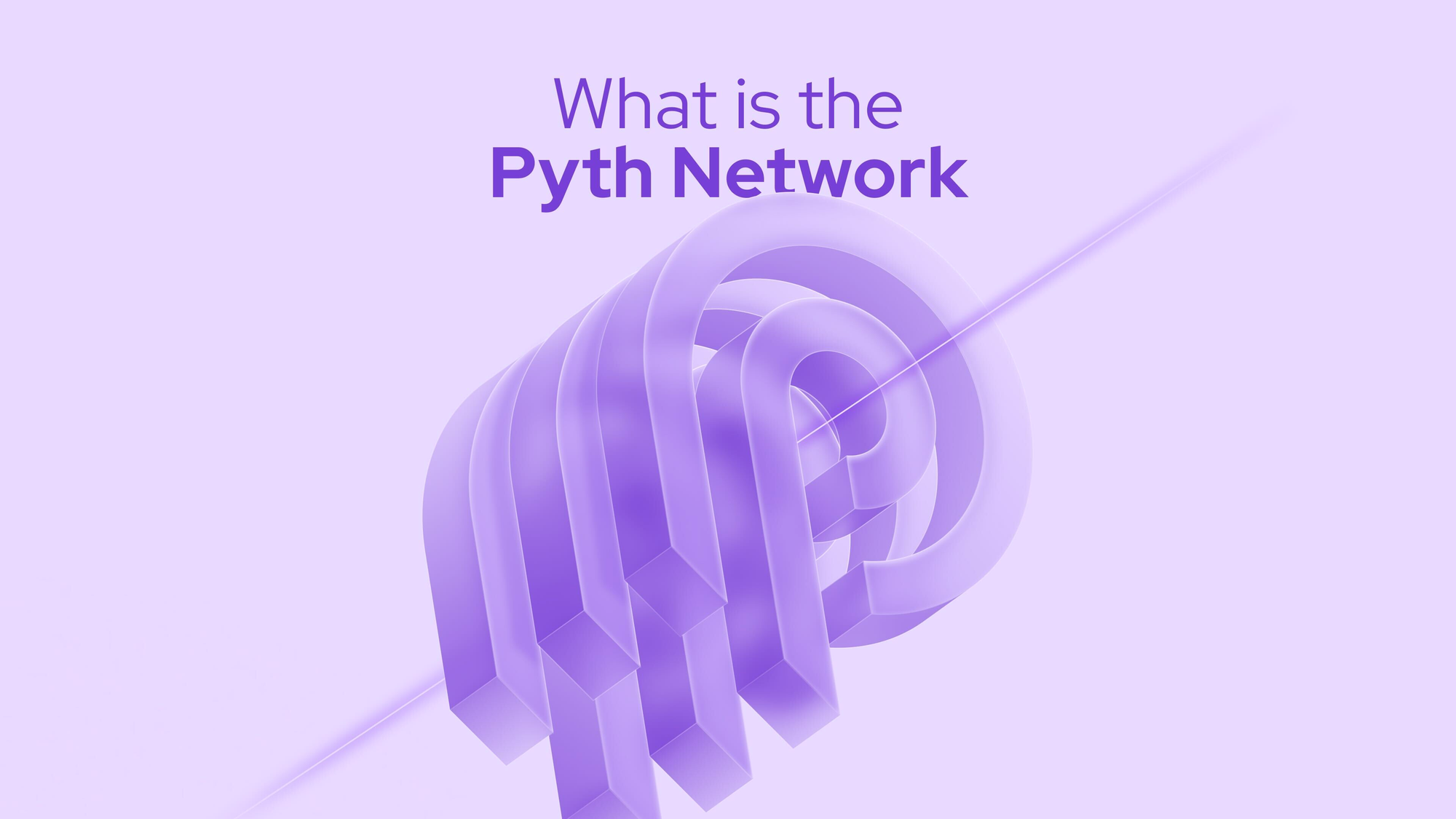what is PYTH NETWORK

Everything You Need to Know About the Pyth Network
Share:
Decentralized finance (DeFi) promises to revolutionize the way we manage our money and empower individuals to take control of their financial lives. The vast majority of DeFi services require a blockchain oracle—a secure, reliable method for blockchain applications to obtain financial data from the external world.
Enter the Pyth Network, the largest first-party oracle network for publishing financial market data on-chain. The network sources its data from over 90 first-party data providers, including some of the biggest exchanges and market makers. Pyth offers real-time price feeds for cryptocurrencies, equities, foreign exchange pairs, ETFs, and commodities to smart contract developers on more than 40 blockchains.
Since April 2021, the contributors of the Pyth Network have been working to provide Web3 developers with hundreds of real-time price feeds. The mission is to make all of the world's financial market data available on the blockchain for developers everywhere.
With the blockchain industry moving towards a future of high throughput DeFi, there is a rapidly growing demand for low-latency, high-frequency on-chain data. This blog post delves into the Pyth Network’s role in enabling this transformation.
Why Do We Need Another Oracle?
The Pyth Network is not the first blockchain oracle. The contributors behind Pyth began this project in DeFi Summer of 2020 because they noticed a gap in blockchain infrastructure that held back the promises of the blockchain space. Simply put, a price oracle for ultra-low-latency, institutional-quality market data did not exist. Web3 developers felt this gap in three ways:
1. Speed: Oracles were not updating fast enough for many financial use cases.
If prices on the blockchain are slower than real-world markets, then DeFi services will be inaccurate and even vulnerable to malicious attacks. These restrictions prevent developers from building sophisticated financial services. At the time, price oracles only updated every 10-60 minutes or ‘heartbeat’, which cannot support use cases that require low-latencies and high-frequency updates.
2. Coverage and Availability: Developers did not have access to the price feeds they needed.
Developers need access to certain assets or markets to serve their users. Developers cannot deliver financial services if the relevant price feeds are not available on their blockchain of choice. Legacy oracles could have e.g. 200 price feeds on Ethereum but only 8 on a newer chain like Base. The same oracle could also support multiple chains but have only a few price feeds that are available on all supported chain. These limitations can delay a protocol’s roadmap.
3. Sourcing and Quality: Data was opaque and came from aggregated, third-party sources.
Price oracles can be responsible for securing billions of dollars of smart contract value. But if the ultimate source of their data is opaque, developers and users cannot trust the quality of the prices they receive. Additionally, it will be difficult to hold these sources accountable for their prices, especially if the oracle is collecting these prices from public aggregator services or scraping services. Developers must be able to verify the inputs from their oracle's data sources and understand the reputations at stake.
How Pyth Works
The Legacy Model for Data Distribution
The Pyth Network is designed to solve these three limitations. These shortcomings arose because traditional oracles were designed based on a fundamental misunderstanding of how financial data works.
The implicit premise behind many legacy oracles is that all data, including financial data, is freely available in the Web2 space. According to this approach, the oracle provider simply needs to incentivize network participants to fetch this data, come to a consensus, and bring it on-chain.
A network of nodes will collect or scrape data from public resources, including aggregators compiling third-party data from other undisclosed sources. This method of data sourcing may work for public datasets such as weather or sports data. However, when it comes to financial data, the oracle must make compromises in terms of data quality, costs, and scaling. Furthermore, some financial data cannot be redistributed freely due to IP laws. Consider the financial exchange industry. In 2022, the largest traditional exchanges earned $6.6B in total for data fees alone. Subscriptions to professional data terminals like Bloomberg costs tens of thousands of dollars per year. Even crypto exchanges like Coinbase have started charging for market data. The financial data industry operates as a walled garden.
Consider the financial exchange industry. In 2022, the largest traditional exchanges earned $6.6B in total for data fees alone. Subscriptions to professional data terminals like Bloomberg costs tens of thousands of dollars per year. Even crypto exchanges like Coinbase have started charging for market data. The financial data industry operates as a walled garden.
The alternative solution—non-paywalled data—is either delayed for free users or aggregated by freemium services not tailored for smart contracts. Legacy oracles cannot access the first type of valuable data without violating IP laws. Smart contract developers therefore get the second-best data, at the expense of DeFi users.
A New Model for Data Distribution
The Pyth Network is built on the understanding that financial data is valuable and not freely attainable. Instead of serving a rough approximation of this data, the Pyth protocol empowers and incentivizes original owners of financial data to contribute it directly to the blockchain. The network’s data sources are called “first-party” because they create and own the data that they contribute.










































